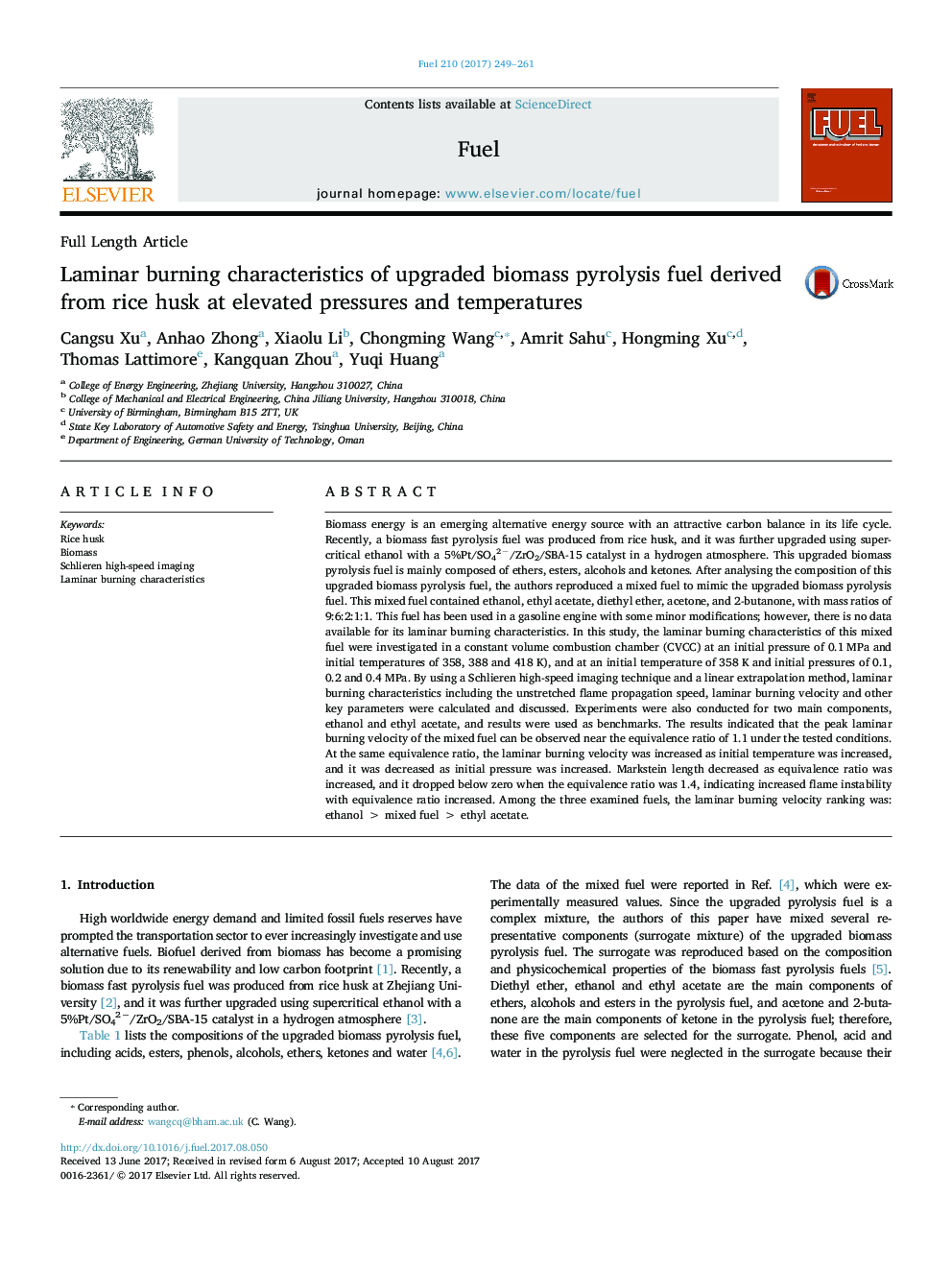| کد مقاله | کد نشریه | سال انتشار | مقاله انگلیسی | نسخه تمام متن |
|---|---|---|---|---|
| 4768320 | 1424954 | 2017 | 13 صفحه PDF | دانلود رایگان |
عنوان انگلیسی مقاله ISI
Laminar burning characteristics of upgraded biomass pyrolysis fuel derived from rice husk at elevated pressures and temperatures
ترجمه فارسی عنوان
خصوصیات سوزشی لامینار سوخت پیلوریلیز سوخت زیستی به دست آمده از پوسته برنج در فشار و دمای بالا
دانلود مقاله + سفارش ترجمه
دانلود مقاله ISI انگلیسی
رایگان برای ایرانیان
موضوعات مرتبط
مهندسی و علوم پایه
مهندسی شیمی
مهندسی شیمی (عمومی)
چکیده انگلیسی
Biomass energy is an emerging alternative energy source with an attractive carbon balance in its life cycle. Recently, a biomass fast pyrolysis fuel was produced from rice husk, and it was further upgraded using supercritical ethanol with a 5%Pt/SO42â/ZrO2/SBA-15 catalyst in a hydrogen atmosphere. This upgraded biomass pyrolysis fuel is mainly composed of ethers, esters, alcohols and ketones. After analysing the composition of this upgraded biomass pyrolysis fuel, the authors reproduced a mixed fuel to mimic the upgraded biomass pyrolysis fuel. This mixed fuel contained ethanol, ethyl acetate, diethyl ether, acetone, and 2-butanone, with mass ratios of 9:6:2:1:1. This fuel has been used in a gasoline engine with some minor modifications; however, there is no data available for its laminar burning characteristics. In this study, the laminar burning characteristics of this mixed fuel were investigated in a constant volume combustion chamber (CVCC) at an initial pressure of 0.1 MPa and initial temperatures of 358, 388 and 418 K), and at an initial temperature of 358 K and initial pressures of 0.1, 0.2 and 0.4 MPa. By using a Schlieren high-speed imaging technique and a linear extrapolation method, laminar burning characteristics including the unstretched flame propagation speed, laminar burning velocity and other key parameters were calculated and discussed. Experiments were also conducted for two main components, ethanol and ethyl acetate, and results were used as benchmarks. The results indicated that the peak laminar burning velocity of the mixed fuel can be observed near the equivalence ratio of 1.1 under the tested conditions. At the same equivalence ratio, the laminar burning velocity was increased as initial temperature was increased, and it was decreased as initial pressure was increased. Markstein length decreased as equivalence ratio was increased, and it dropped below zero when the equivalence ratio was 1.4, indicating increased flame instability with equivalence ratio increased. Among the three examined fuels, the laminar burning velocity ranking was: ethanol > mixed fuel > ethyl acetate.
ناشر
Database: Elsevier - ScienceDirect (ساینس دایرکت)
Journal: Fuel - Volume 210, 15 December 2017, Pages 249-261
Journal: Fuel - Volume 210, 15 December 2017, Pages 249-261
نویسندگان
Cangsu Xu, Anhao Zhong, Xiaolu Li, Chongming Wang, Amrit Sahu, Hongming Xu, Thomas Lattimore, Kangquan Zhou, Yuqi Huang,
